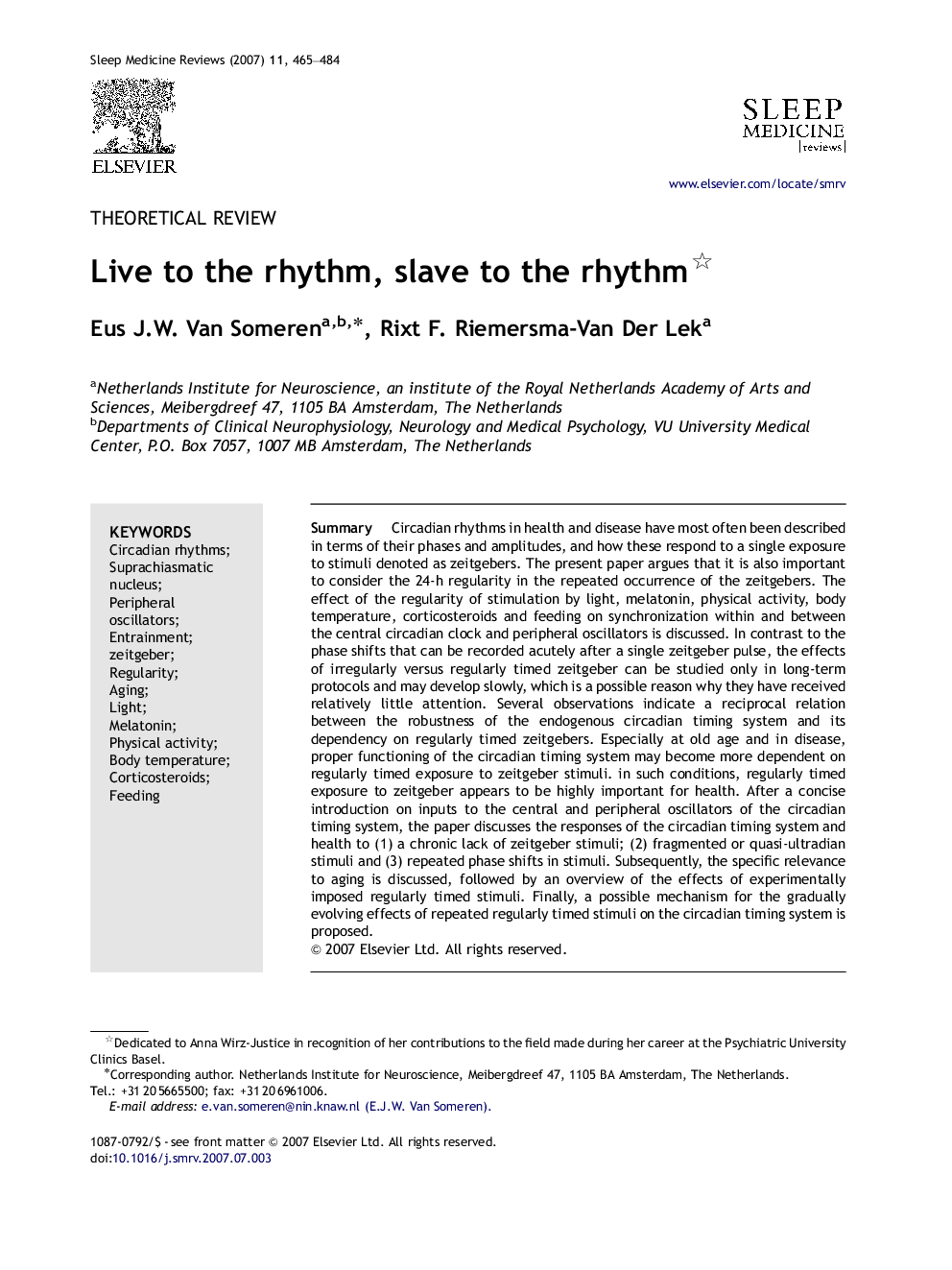| Article ID | Journal | Published Year | Pages | File Type |
|---|---|---|---|---|
| 3091965 | Sleep Medicine Reviews | 2007 | 20 Pages |
SummaryCircadian rhythms in health and disease have most often been described in terms of their phases and amplitudes, and how these respond to a single exposure to stimuli denoted as zeitgebers. The present paper argues that it is also important to consider the 24-h regularity in the repeated occurrence of the zeitgebers. The effect of the regularity of stimulation by light, melatonin, physical activity, body temperature, corticosteroids and feeding on synchronization within and between the central circadian clock and peripheral oscillators is discussed. In contrast to the phase shifts that can be recorded acutely after a single zeitgeber pulse, the effects of irregularly versus regularly timed zeitgeber can be studied only in long-term protocols and may develop slowly, which is a possible reason why they have received relatively little attention. Several observations indicate a reciprocal relation between the robustness of the endogenous circadian timing system and its dependency on regularly timed zeitgebers. Especially at old age and in disease, proper functioning of the circadian timing system may become more dependent on regularly timed exposure to zeitgeber stimuli. in such conditions, regularly timed exposure to zeitgeber appears to be highly important for health. After a concise introduction on inputs to the central and peripheral oscillators of the circadian timing system, the paper discusses the responses of the circadian timing system and health to (1) a chronic lack of zeitgeber stimuli; (2) fragmented or quasi-ultradian stimuli and (3) repeated phase shifts in stimuli. Subsequently, the specific relevance to aging is discussed, followed by an overview of the effects of experimentally imposed regularly timed stimuli. Finally, a possible mechanism for the gradually evolving effects of repeated regularly timed stimuli on the circadian timing system is proposed.
